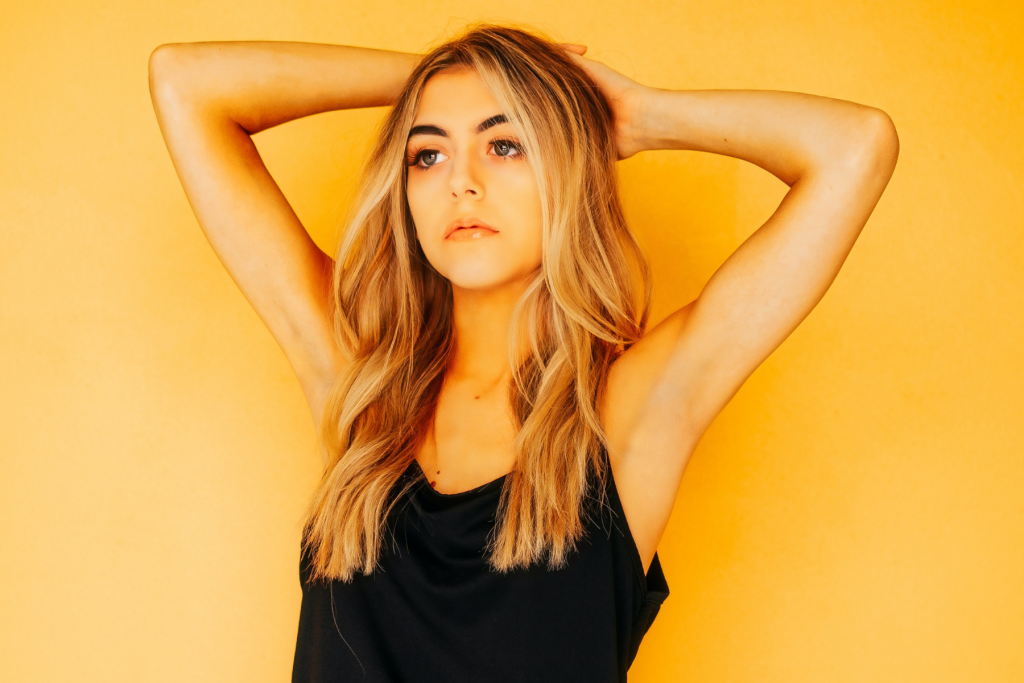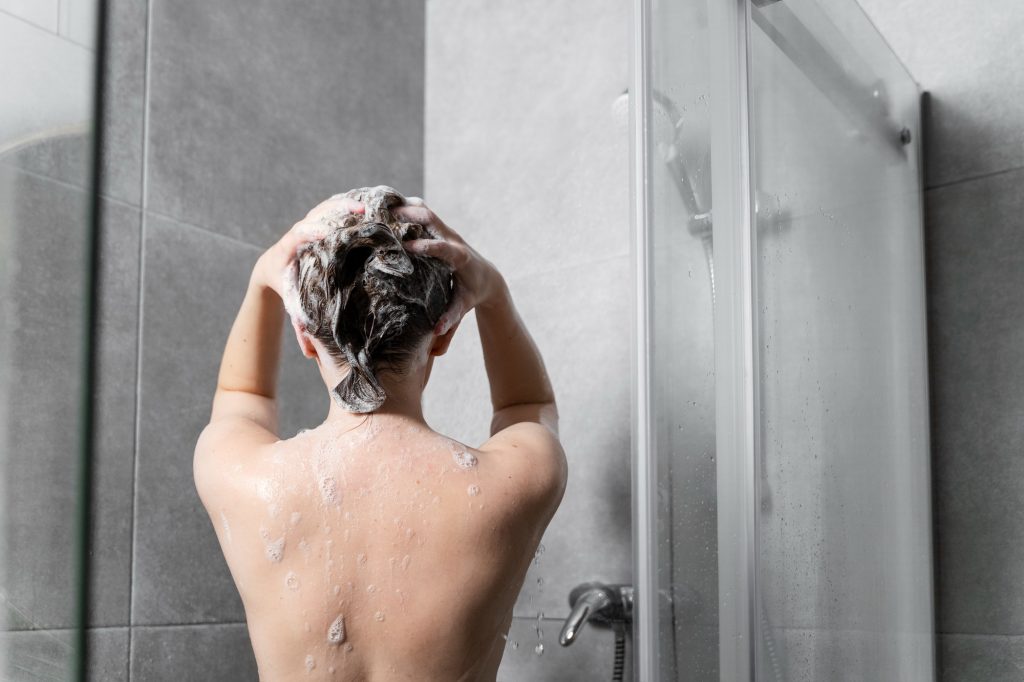Discover whether anti-dandruff shampoo is safe to use on dyed honey hair.
Can Anti-Dandruff Shampoo Be Used on Dyed Honey Hair?
If you’re a proud owner of honey-colored hair, you know that keeping those golden locks looking fabulous is no easy task. Maintaining the vibrant hue takes effort and dedication. But what if you also struggle with dandruff? Can you use anti-dandruff shampoo on your beloved honey hair? Let’s dive into the world of dandruff, anti-dandruff shampoos, and the impact they may have on dyed hair.

Understanding Dandruff and Its Causes
Dandruff is a common scalp condition that affects many people. It’s characterized by white flakes that fall from the scalp, causing discomfort and embarrassment. But what causes this annoying phenomenon? Let’s take a closer look.
What is Dandruff?
Dandruff is the result of excessive shedding of dead skin cells from the scalp. This shedding process is a natural occurrence, but in people with dandruff, it becomes more noticeable and troublesome.
Common Causes of Dandruff
There are several factors that contribute to the development of dandruff. These can include dry skin, oily scalp, fungal infections, and even certain hair products.
Dry skin is a common cause of dandruff. When the skin on the scalp becomes dry, it can lead to itching and flaking. This dryness can be caused by various factors, such as cold weather, low humidity, or excessive use of harsh hair products.
On the other hand, an oily scalp can also contribute to dandruff. When the scalp produces too much oil, it can create an environment that is conducive to the growth of yeast-like fungi called Malassezia. These fungi feed on the scalp’s natural oils and can cause irritation and inflammation, leading to dandruff.
Fungal infections, such as seborrheic dermatitis, can also result in dandruff. Seborrheic dermatitis is a common skin condition that causes redness, itching, and flaking. It is often found on the scalp, but can also affect other areas of the body, such as the face and chest.
In addition to dry skin, oily scalp, and fungal infections, certain hair products can also trigger dandruff. Some shampoos, conditioners, and styling products contain ingredients that can irritate the scalp and lead to flaking. It’s important to choose hair products that are gentle and suitable for your scalp type to avoid exacerbating dandruff.
However, it’s important to note that dandruff is not solely caused by poor hygiene. Even the most meticulous hair care routine can’t always prevent those pesky flakes.
The Impact of Anti-Dandruff Shampoo on Hair
Now that we know a bit more about dandruff, let’s explore the effectiveness and potential consequences of using anti-dandruff shampoos.
Dandruff, a common scalp condition characterized by flaking and itching, can be a source of frustration and embarrassment for many individuals. Fortunately, there are numerous anti-dandruff shampoos available on the market that claim to provide relief from this pesky problem.
How Anti-Dandruff Shampoos Work
Anti-dandruff shampoos typically contain active ingredients such as zinc pyrithione, selenium sulfide, or ketoconazole. These ingredients work by targeting the underlying causes of dandruff, helping to reduce flakes and alleviate scalp irritation.
Zinc pyrithione, for example, has antifungal properties that can inhibit the growth of the fungus Malassezia, which is often associated with dandruff. Selenium sulfide, on the other hand, works by slowing down the turnover of skin cells on the scalp, thereby reducing the formation of flakes. Ketoconazole, a broad-spectrum antifungal agent, can also be effective in treating dandruff caused by fungal infections.
Potential Side Effects of Anti-Dandruff Shampoos
While anti-dandruff shampoos can be effective in combating dandruff, they may also have some unintended consequences. Some people may experience dryness or irritation of the scalp, while others may notice changes in hair texture or color.
It is important to note that these side effects are not experienced by everyone and can vary depending on individual factors such as hair type, sensitivity, and frequency of use. For some individuals, the benefits of using anti-dandruff shampoos outweigh the potential drawbacks.
Additionally, it is worth mentioning that prolonged and excessive use of certain anti-dandruff shampoos may lead to scalp sensitivity or resistance to the active ingredients. Therefore, it is advisable to consult a dermatologist or trichologist for personalized recommendations and guidance.
This brings us to the burning question: can these shampoos be safely used on dyed honey hair? Let’s find out!
Dyed honey hair, with its warm golden tones, requires special care to maintain its vibrancy and luster. The use of anti-dandruff shampoos on dyed hair has been a subject of concern for many individuals, as they fear that these shampoos may strip away the color or cause damage.
While it is true that some anti-dandruff shampoos may contain ingredients that can potentially fade hair color, not all shampoos are created equal. There are anti-dandruff shampoos specifically formulated for colored hair, which aim to provide dandruff relief without compromising the hair color.
It is important to read the labels carefully and look for shampoos that are labeled as “color-safe” or “for colored hair.” These shampoos are typically formulated with gentle cleansing agents and color-protecting ingredients to minimize color fading and maintain the integrity of the hair.
However, it is always recommended to perform a patch test before using any new product on dyed hair. Apply a small amount of the shampoo to a discreet section of hair and monitor for any adverse reactions or color changes. If no negative effects are observed, it is generally safe to use the anti-dandruff shampoo on the entire head of hair.
In conclusion, anti-dandruff shampoos can be effective in combating dandruff, but it is important to be aware of the potential side effects and choose the right shampoo for your specific needs. When using anti-dandruff shampoos on dyed hair, opt for color-safe formulas and perform a patch test to ensure compatibility. With proper care and attention, you can maintain a healthy scalp and vibrant hair color simultaneously.
The Process of Hair Dyeing
Before we dive into the specific effects of anti-dandruff shampoos on dyed honey hair, let’s first understand how the hair dyeing process works.
Hair dye works by penetrating the hair shaft and depositing color molecules, creating a new hue. The effectiveness and longevity of the dye depend on various factors, including dye formulation, hair porosity, and aftercare.
When you decide to dye your hair, it’s important to consider the color you want to achieve and the current state of your hair. Different hair types and textures may react differently to hair dye, so it’s essential to choose a dye that suits your hair’s needs.
The process of hair dyeing typically involves several steps. First, a pre-color treatment may be applied to prepare the hair for the dye. This treatment helps to remove any build-up or residue that may interfere with the dye’s absorption.
Next, the hair dye is mixed according to the instructions on the packaging. It is important to follow these instructions carefully to ensure the best results. Once the dye is prepared, it is applied to the hair using a brush or applicator, making sure to cover all strands evenly.
After the dye is applied, it needs time to develop and process. This usually involves leaving the dye on the hair for a specific amount of time, as indicated in the instructions. During this time, the color molecules penetrate the hair shaft, creating the desired color.
Once the processing time is complete, the hair is rinsed thoroughly to remove any excess dye. It is important to rinse the hair until the water runs clear to ensure that all the dye is removed.
After dyeing, it’s crucial to take proper care of your newly colored hair. This includes using color-safe shampoos and conditioners, avoiding excessive heat styling, and protecting your hair from prolonged sun exposure.
The Lifespan of Dyed Hair
Keep in mind that all hair dye fades over time, regardless of whether or not you use anti-dandruff shampoo. Exposure to sunlight, heat styling, and regular washing can all contribute to color fading.
The lifespan of dyed hair can vary depending on several factors. The quality of the dye, the condition of the hair, and the level of maintenance all play a role in how long the color will last.
Some dyes are designed to last longer than others, offering more extended color retention. However, even the most long-lasting dyes will eventually fade over time.
It’s also essential to note that different hair colors may fade differently. For example, vibrant and intense shades may fade faster than more natural or muted tones.
To extend the lifespan of your dyed hair, there are a few things you can do. Using color-protecting shampoos and conditioners can help maintain the vibrancy of the color. Additionally, limiting exposure to direct sunlight and avoiding excessive heat styling can also help prevent color fading.
Now, let’s address the burning question we’ve all been waiting for.
The Effects of Anti-Dandruff Shampoo on Dyed Hair
Can anti-dandruff shampoo strip hair color? The answer is: it depends.

Can Anti-Dandruff Shampoo Strip Hair Color?
While some anti-dandruff shampoos can be harsh on dyed hair, not all of them will cause significant color fading. It’s crucial to carefully read the ingredients and choose a shampoo specifically designed for color-treated hair.
If you’re concerned about preserving your honey hair’s vibrancy, look for shampoos that are sulfate-free and gentle on color-treated hair.
Protecting Your Dyed Hair from Damage
If you do decide to use an anti-dandruff shampoo on your dyed honey hair, take some extra steps to ensure its protection. Consider using a pre-shampoo conditioner or a hair mask to create a barrier between your hair and the shampoo. Additionally, limiting shampooing frequency can help maintain your hair color.
Remember, prevention is key! Taking care of your dyed hair properly can help extend its lifespan and keep it looking fabulous for longer.
Special Considerations for Honey Colored Hair
Honey colored hair possesses a unique charm and attractiveness. However, it also comes with its own set of challenges when it comes to hair care.
The Unique Challenges of Maintaining Honey Hair Color
Honey hair color can be more prone to fading than other shades. The warm golden tones are especially susceptible to damage from environmental factors, such as sun exposure and heat styling.
Tips for Preserving the Vibrancy of Honey Hair Color
To maintain the vibrancy of your honey hair color, consider using color-enhancing shampoos and conditioners specifically formulated for warm tones. These products can help refresh your color and keep it looking radiant between salon visits.
Additionally, protecting your hair from excessive heat and UV rays by using heat protectant sprays and wearing a hat when outdoors can work wonders for preserving your honey hue.
Wrapping Up
In conclusion, using anti-dandruff shampoo on dyed honey hair is not entirely off-limits. With the right choice of shampoo and careful hair care practices, you can keep both your color and your scalp in great shape. Remember to prioritize the health and integrity of your hair, adapt your hair care routine as needed, and always consult with a professional if you have any concerns.
Your journey to maintaining vibrant, dandruff-free honey hair may have a few twists and turns, but with determination and a dash of playful experimentation, you’ll rock those golden tresses with confidence!






[…] make us feel self-conscious. But what if you have dyed strawberry blonde hair? Can you still use anti-dandruff shampoo without ruining your vibrant color? Let’s dive into the world of dandruff, hair dye, and find […]
[…] good news is that many anti-dandruff shampoos are formulated to be gentle on color-treated hair. They are designed to cleanse the scalp and treat dandruff without causing significant color […]